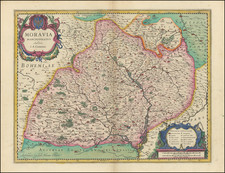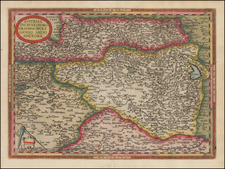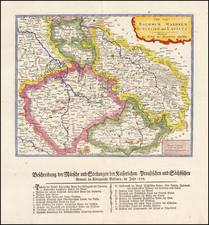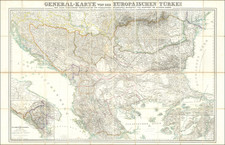John Cary's 1799 map of Hungary encapsulates the complex geographic and political landscape of Central Europe at the cusp of the 19th century. As a notable English cartographer, Cary's detailed works were known for their precision and clarity, characteristics vividly reflected in this map of Hungary.
The geopolitical state of Hungary in the late 18th century was a terrain of shifting boundaries and allegiances. At the time, the Kingdom of Hungary was part of the Habsburg Monarchy and the broader landscape of the Holy Roman Empire. This period, marked by the enlightened absolutism of Emperor Joseph II, witnessed significant social and political transformations.
Cary's map delineates Hungary's geographic span, partitioning the territory into its distinct 'gespanchafts' or counties. Beyond Hungary's core, it further encompasses the regions of Croatia, Sclavonia, Transylvania, and Upper and Lower Hungary.
Each city and village within these territories are pinpointed with precision, their names inscribed in an elegant, legible script. These miniature yet critical annotations bear witness to the bustling life and diverse communities that populated this region over two centuries ago.
John Cary (1755-1835) was a British cartographer and publisher best known for his clean engraving and distinct style which influenced the entire map industry. Born in Wiltshire, John was apprenticed to an engraver in London. He started his own business by 1782 and moved to several premises before settling at 86 St James’s Street in 1820.
Cary had several significant collaborations during his career. John Wallis and Cary diversified Cary’s business to include broader publishing projects. Brother William and John made globes together, while brother Francis participated in the company’s engraving work. Finally, geologist William Smith and Cary developed and sold geological maps, some of the first of their kind. The pair also produced a notable series of county maps starting in 1819. Cary’s atlases, of English counties and the world, were the standard texts of the early nineteenth century. He was appointed surveyor of roads to the General Post Office in 1794, which led to the New Itinerary, first published in 1798.
John trained his son, George, in engraving and George and his other son, John Jr., took over the business in 1821. It was then known as G. and J. Cary and continued in trade until 1850. The firm’s materials were then acquired by George Frederick Cruchley and then Gall and Inglis. By the time John died in 1835, Cary was the authoritative name in private map publishing and his business was a leader in the field throughout the first half of the nineteenth century.










![Von den Sieben burgen [Siebenberg / Transylvania]](https://storage.googleapis.com/raremaps/img/small/78330.jpg)

![(Second World War - Sudetenland) Wer Braucht Sicherheit im Südosten? [Who Needs Security in the Southeast?]](https://storage.googleapis.com/raremaps/img/small/98159.jpg)

